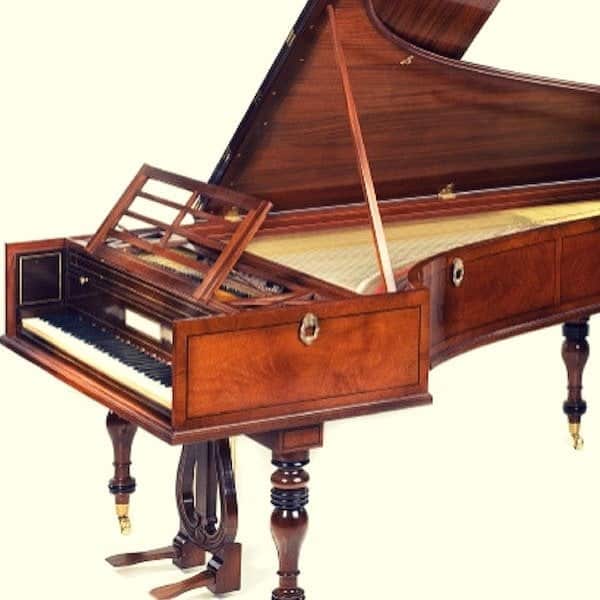The story of the first ever Piano
The Piano is arguably the most influential instrument in the evolution of modern western music. It has also been described as one of the easiest instruments to learn, but the hardest to master. The Piano is unique in that it is a stringed instrument, a percussion instrument and also keyboard instrument.
The beginnings of the Piano can be traced back all the way to 900AD to an instrument called the Hammered Dulcimer or Hackbrett. The Hackbrett is a triangular shaped wooden instrument with a series of strings stretched across 2 bridges. The Hackbret either sits on the lap or in front of the player and is played by striking the strings with little spoon shaped hammers. In Europe and the UK the Hackbrett was tuned to the western chromatic scale with the stings arranged in the circle of fifths. But this instrument was commonly used all over Asia, India and the Middle-East where different tunings were likely used.


The word ‘claviature’ is said to mean ‘a keyboard or fingering system’. In around the 1400’s, the Hackbrett had evolved to include a keyboards which made playing much easier. They keys were arranged in a way that maps out the western chromatic scale with black and white notes. From here on we saw the emergence of the clavichord, clavecina, spinet, virginal and gravicembalo.
The Harpsichord
In the 1500’s the Harpsichord became a prominent member of the stringed keyboard instrument family. The harpsichord also has strings, starched over a bridge. The Harpsichord was made for volume so is far larger than any of its relatives. It has a lid that sits up to allow for sound projection and the stings are plucked by a rotating mechanism rather than struck with hammers.
The popularity of the harpsichord inspired many composers to write for keyboard instruments. Though beautifully loud, the harpsichord was not able to convey dynamics. Meaning it could not be played both loudly and softly. Harpsichord music was composed specifically with this in mind. Composers used denser passages of notes to convey loudness and more sparsely placed notes to convey softness.


The first Pianoforte was made in Italy by a Harpsichord maker Bartolomeo di Francesco Cristofori. The words ‘Piano’ means soft and the word ‘Forte’ means loud. This new instrument had the ability to be played both softly and loudly hence being named the ‘softloud’. Crisofori had created a hammer mechanism that fit the larger size of the Harpsichord and there the Piano was born. Composers like Beethoven had a large influence on the development of the Pianoforte in Vienna in the 1800’s.
Europe led the Piano manufacture boom in the 1900’s in countries such as Germany, Austria, Italy and Vienna. Pianos were also made in England, America and Australia. Today, the majority of pianos are made in Japan, and China with a few still made in Europe and the USA.
Over the years many amendments were made to the Piano by Piano makers all over the world. This included the development of the upright piano, the steel or iron frame, under dampers, practice pedals or levers, player pianos or pianolas. Today the traditional Piano has moved gracefully into the digital age with the invention of the hybrid piano. A full acoustic piano that uses laser-sensors, robotics and digital technology to enable the Piano be connected to the internet and played from anywhere in the world.

The story of the development of the piano is really a story of mankind’s ability to collaborate to make wonderful things limited only by our imaginations.